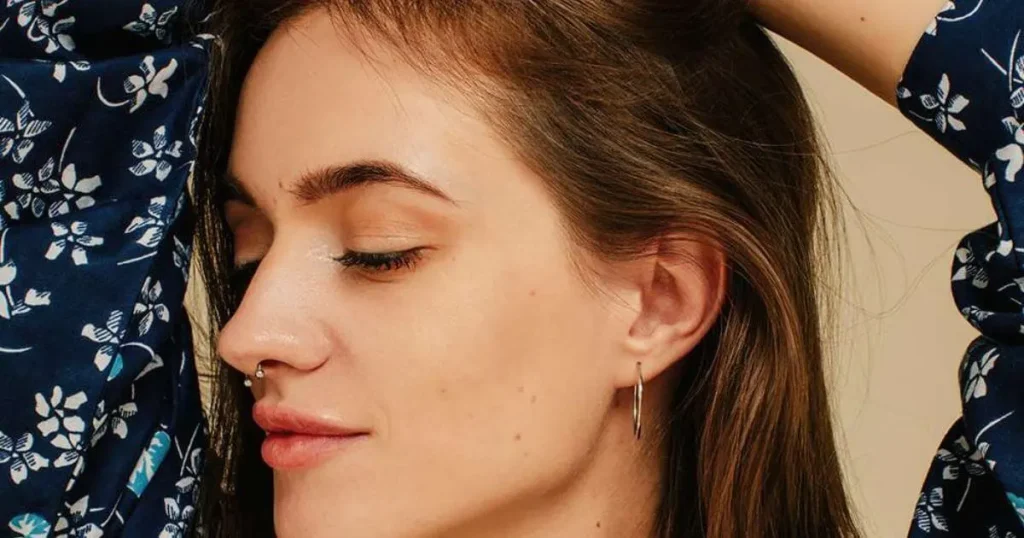Body piercings are a popular way to express personal style and individuality. People of all ages enjoy getting various parts of their bodies pierced, from ears and noses to navels and eyebrows. Each type of piercing has its own unique appeal and charm. However, it’s important to know that every piercing has a different healing time. Understanding how long each type of piercing takes to heal helps you care for it properly and avoid infections or complications.
In this article, we will explore the average healing times for different types of piercings. This information will help you make informed decisions about which piercings to get and how to care for them.
Table of Contents
Factors Affecting Healing Time
Several factors can affect how long it takes for a piercing to heal. Knowing these can help you manage and speed up the healing process.
Individual Differences
Each person’s body heals at a different rate. Age, overall health, and lifestyle all play a role in how quickly a piercing heals. Younger, healthier individuals might heal faster, while older people or those with certain health conditions may take longer.
Quality of Aftercare
How you care for your piercing greatly impacts its healing time. Proper cleaning and avoiding unnecessary touching or movement can prevent infections and promote faster healing. Using saline solution or gentle cleansers recommended by professionals can make a big difference.
Type of Jewelry Used
The material and style of jewelry you choose for your piercing also affect healing. Hypoallergenic materials like titanium or surgical steel are less likely to cause allergic reactions or irritations. Choosing the right size and shape can prevent unnecessary pressure or movement that can delay healing.
Location and Type of Piercing
Different parts of the body heal at different rates. For example, ear lobe piercings typically heal faster than cartilage piercings because the tissue is softer and has better blood flow. Surface piercings, which are placed on flat areas of the body, may take longer to heal and are more prone to complications.
Common Piercing Types
There are several common types of body piercings to consider. Each type has its healing process and aftercare requirements.
Earlobe Piercing
Earlobe piercings are the most common and typically have a shorter healing time than cartilage piercings.
Helix Piercing
A helix piercing involves the cartilage of the upper ear and often takes longer to heal due to the nature of cartilage tissue.
Nose Piercing
Nose piercings can be either on the nostril or septum, with healing times varying based on the exact location of the piercing.
Navel Piercing
Navel piercings, or belly button piercings, require special care due to their location and can take several months to heal completely.
Other Types
Eyebrow Piercing: Healing time depends on the thickness of the skin in the eyebrow area.
Cheek Piercing: These piercings go through the cheek tissue and may have a more extended healing period.
Tongue Piercing: Tongue piercings heal relatively quickly but require careful attention due to the risk of infection.
Paired Lip Piercings: Healing times can vary based on the specific location of the piercings on the lips.
Healing Time by Piercing Type
Lobe Piercing
Lobe piercings are the most common type of ear piercing. They are done on the soft, lower part of the ear, called the earlobe. This area is easy to pierce and usually heals quickly. Lobe piercings are the most common type of ear piercing. They are done on the soft, lower part of the ear, called the earlobe. This area is easy to pierce and usually heals quickly.
Helix and Outer Cartilage
Helix and outer cartilage piercings, including those on the upper ear, may take longer to heal, ranging from 6 to 12 months. These piercings involve the more rigid cartilage tissue, which requires more time to strengthen and settle. Proper aftercare is crucial to prevent infections and promote healing.
Navel Piercing
Navel piercings, also known as belly button piercings, have a healing time of approximately 9-12 months. This area is prone to movement and friction, prolonging the healing process. Keeping the piercing clean and avoiding tight clothing can aid in faster healing.
Nostril Piercing
Nostril piercings typically heal within 6-9 months. The delicate nature of the nostril area requires gentle care to avoid irritation and promote healing. Regular cleaning with saline solution and avoiding touching the piercing can speed up healing.
Septum Piercing
Septum piercings in the middle of the nose usually heal in about 3-4 months. Adequate hygiene practices and avoiding harsh products near the piercing site are essential for a smooth healing experience.
Eyebrow Piercing
Eyebrow piercings typically take 3-5 months to heal. As they are exposed to facial movements and environmental factors, proper care, and avoiding trauma to the area are crucial for healing without complications.
Cheek Piercing
Cheek piercings have one of the most extended healing times, ranging from 12 to 18 months. This type of piercing involves thicker tissue and is more prone to swelling and infection. Diligent aftercare and regular check-ups with a piercer are necessary for a successful healing process.
Tongue Piercing
Tongue piercings have a relatively quick healing time of 6-8 weeks. However, following proper oral hygiene and avoiding irritating foods or activities during healing is crucial.
Paired Lip Piercings
Paired lip piercings, such as snake or angel bites, typically heal in 3-4 months. Cleaning and avoiding excessive movement or pressure on the piercings can promote faster healing.
Factors Influencing Healing
Piercing Location
The spot where you get pierced significantly affects how fast your body can heal. Areas with more blood flow tend to recover quicker. For example, a piercing on your earlobe might heal faster than one on your cheek because the earlobe has better blood circulation.
Individual Healing Speed
Everyone’s body is different, so that healing times can vary from person to person. Age, overall health, and genetics can affect how quickly your piercing heals. Younger people and those in good health might heal faster than older individuals or those with health issues.
Aftercare Practices
Taking good care of your piercing is crucial for faster healing. Cleaning it regularly with a saline solution or mild soap helps prevent infections. Avoid touching it with dirty hands, and steer clear of harsh chemicals that may irritate the piercing. Following the aftercare instructions given by your piercer is critical to a smooth healing process.
Signs of Fully Healed Piercings
Physical Indicators
When your piercing is fully healed, you’ll notice some clear signs. The skin around the piercing will look normal without redness, swelling, or discharge. You might also feel less tenderness or pain when touching or moving the jewellery.
Sensations and Discomforts
During the healing process, it’s normal to experience some sensations and discomforts. Initially, there might be mild pain, swelling, and a bit of discharge, all part of the body’s healing response. However, if you notice severe pain, excessive swelling, or pus-like discharge, it could indicate an infection and require immediate attention from a healthcare professional.
Closing Time for Piercings
Factors Affecting Closure
When it comes to piercing closure, several factors play a crucial role. The location of the piercing is one of the primary factors influencing how long it takes to close. For example, piercings in areas with more cartilage, like the helix or outer ear, tend to take longer to close compared to piercings in softer areas, like the lobe.
Another factor is the individual’s healing speed and immune response. Some people naturally heal faster than others so that the closure time can vary from person to person. Additionally, the aftercare practices followed after getting a piercing can impact how quickly it closes. Proper cleaning and maintenance can help prolong the life of a piercing while neglecting aftercare can lead to faster closure.
General Closure Times
The time it takes for a piercing to close can vary widely depending on the type of piercing and individual factors. Here are some general closure times for common piercings:
- Lobe Piercing: Can close in 3-4 months if not regularly worn.
- Helix and Outer Cartilage: It may take 6-12 months to close fully.
- Navel Piercing: Typically closes within 9-12 months.
- Nostril Piercing: Can close in 6-9 months.
- Septum Piercing: May close within 3-4 months.
- Eyebrow Piercing: Can close in 3-5 months.
- Cheek Piercing: Generally takes 12-18 months to close.
- Nipple Piercing: May close within 8-12 months.
- Tongue Piercing: Can close in as little as 6-8 weeks.
- Paired Lip Piercings: Typically close in 3-4 months if not regularly worn.
Patience and care are crucial when it comes to piercings. Rushing the healing process or neglecting aftercare can lead to complications and prolong healing times. Following professional advice, maintaining good hygiene, and being patient as your body heals are essential. Remember, each person’s healing journey is unique, so listen to your body and seek professional help if you have any concerns about your piercings.
- How to Use Aloe Vera for Acne: A Comprehensive Guide - June 1, 2024
- Jojoba Oil for Hair: How to Use for Maximum Benefits - May 19, 2024
- 8 Benefits of Jojoba Oil for Skin: The Ultimate Guide - May 18, 2024



